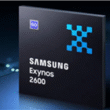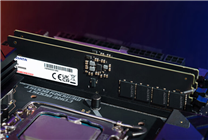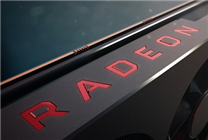DDR4 Memory Market: Insights and Future Outlook
Summary:
- Current memory market conditions create challenges for manufacturers due to high demand and limited supply.
- Major manufacturers have ceased DDR4 production, indicating a lasting supply gap.
- DDR4 prices are projected to rise significantly as shortages persist.
In today’s rapidly evolving technology landscape, the memory market is experiencing unprecedented conditions, described by ADATA’s Chairman, Chen Libai, as "so good that it gives us a headache." With a growing customer demand and a reluctance amongst manufacturers to release stock, the situation presents both opportunities and challenges for the industry.
Production Halts and Market Implications
The recent decision by the three leading international memory manufacturers to halt DDR4 production marks a significant turning point. With older production equipment dismantled, the ability for these manufacturers to return to DDR4 is virtually nonexistent. This withdrawal not only exacerbates the existing supply gap but also indicates a long-term shift in the market dynamics.
Rumors suggesting that these manufacturers might resume DDR4 production due to supply shortages have been firmly debunked. The economics of switching back to older technology do not support such a move, as utilizing new equipment for old production methods is simply not cost-effective. This clear message from industry leaders reinforces the notion that the current demand for DDR4 is significantly higher than previously anticipated, presenting a beneficial landscape for Taiwan-based DDR4 manufacturers like Nanya and Winbond.
Expected Price Increases
As the market continues to grapple with tight supply and heightened demand, significant price increases for DDR4 are on the horizon. Recent reports indicate that major manufacturers such as Micron and Samsung have paused their pricing quotations for a week, reflecting the ongoing strain within the market. Industry analysts project that DDR4 prices may increase by 30% to 50% in the fourth quarter as a direct result of the prevailing shortages.
In light of these market conditions, revisions to pricing strategies have become more common. The validity period for quotations from upstream memory manufacturers has shrunk from an entire quarter to just one month, with price adjustments occurring even more frequently—some every few weeks. This fast-paced environment necessitates agility from manufacturers and buyers alike.
A Bright Future for DDR4 Manufacturers
Despite the challenges posed by the current market dynamics, a forecast of continued prosperity looms for DDR4 manufacturers. ADATA anticipates that their main business will aim to meet and possibly exceed historic operating highs by 2025. This optimistic outlook is underpinned by the recognition that the memory market is expected to remain vibrant for at least two more years.
As conditions evolve, organizations involved in memory production and distribution must remain agile. The dynamics of supply and demand are likely to dictate market behaviors, pushing firms to innovate and adapt to the new realities of production and pricing.
Conclusion
The current state of the memory market presents a unique landscape marked by challenges and opportunities. As production halts signal a permanent shift in focus away from DDR4, the demand is expected to remain robust for the foreseeable future. With anticipated price increases, companies involved in the memory sector must navigate these changes carefully while positioning themselves for success in an increasingly competitive market.
For businesses and consumers alike, understanding these dynamics is crucial in making informed decisions. The DDR4 memory market is at a crossroads, and how stakeholders respond will shape its future trajectory.









